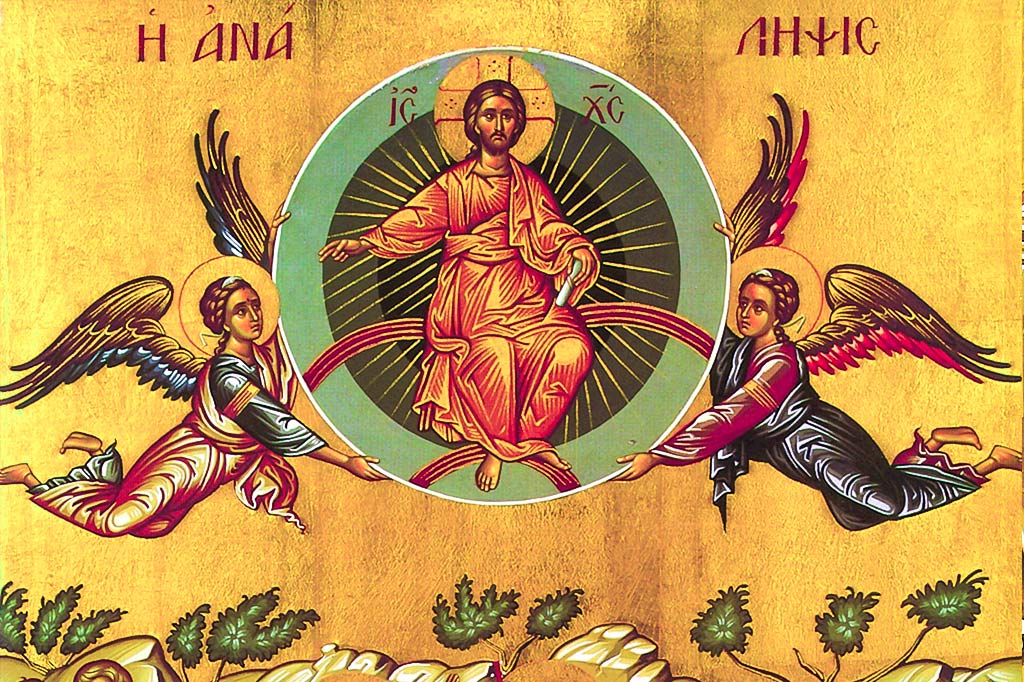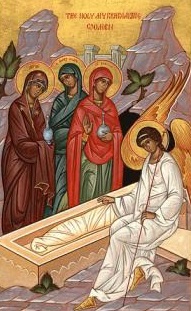Theology
Ascension of our Lord
25. May 2017 - 8:40 The Feast of the Ascension of our Lord God and Savior Jesus Christ is celebrated each year on the fortieth day after the Great and Holy Feast of Pascha (Easter). Since the date of Pascha changes each year, the date of the Feast of the Ascension changes. The Feast is always celebrated on a Thursday. The Feast itself commemorates when, on the fortieth day after His Resurrection, Jesus led His disciples to the Mount of Olives, and after blessing them and asking them to wait for the fulfillment of the promise of the Holy Spirit, He ascended into heaven.
The Feast of the Ascension of our Lord God and Savior Jesus Christ is celebrated each year on the fortieth day after the Great and Holy Feast of Pascha (Easter). Since the date of Pascha changes each year, the date of the Feast of the Ascension changes. The Feast is always celebrated on a Thursday. The Feast itself commemorates when, on the fortieth day after His Resurrection, Jesus led His disciples to the Mount of Olives, and after blessing them and asking them to wait for the fulfillment of the promise of the Holy Spirit, He ascended into heaven.
The Burning of Relics of Saint Sava
10. May 2017 - 14:45 Sava was the Archbishop of the Serbs. The body of St. Sava was buried in Mileshevo Monastery. During the time of the Turkish tyranny, the Serbian people gathered around the relics of their saint to seek comfort and healing.
Sava was the Archbishop of the Serbs. The body of St. Sava was buried in Mileshevo Monastery. During the time of the Turkish tyranny, the Serbian people gathered around the relics of their saint to seek comfort and healing.
Fearing that an insurrection might arise from that place against the Turks, Sinan Pasha of Belgrade ordered that the relics of St. Sava be translated to Belgrade and there to be burned on Vracar, April 27, 1594 A.D. With the burning of the relics of this saint, the rabid Pasha did not burn the saint who remained alive before the Throne of God in the heavens and in the hearts of his people on earth.
Greatmartyr, Victory-bearer and Wonderworker George
6. May 2017 - 19:57 The Holy Great Martyr George the Victory-Bearer, was a native of Cappadocia (a district in Asia Minor), and he grew up in a deeply believing Christian family.
The Holy Great Martyr George the Victory-Bearer, was a native of Cappadocia (a district in Asia Minor), and he grew up in a deeply believing Christian family.
His father was martyred for Christ when George was still a child. His mother, owning lands in Palestine, moved there with her son and raised him in strict piety. When he became a man, St George entered into the service of the Roman army. He was handsome, brave and valiant in battle, and he came to the notice of the emperor Diocletian (284-305) and joined the imperial guard with the rank of comites, or military commander.
No Faith Is More Beautiful Than the Christian Faith
1. May 2017 - 15:36 This wonderful book belongs to Christian Orthodox Catechism series and explores the mystery of faith in Old and New Testament. Penned by Bishop Danilo (Krstić) and Hieromonk Amfilohije (Radović), originally published in Serbian (in 1996) and now available in English for the first time, this Catechism book is a great introduction into the basic evangelical teachings of the Orthodox faith and life. Authors of this publication are offering this simple but existential gift to all. This wonderful book belongs to Christian Orthodox Catechism series and explores the mystery of faith in Old and New Testament.
This wonderful book belongs to Christian Orthodox Catechism series and explores the mystery of faith in Old and New Testament. Penned by Bishop Danilo (Krstić) and Hieromonk Amfilohije (Radović), originally published in Serbian (in 1996) and now available in English for the first time, this Catechism book is a great introduction into the basic evangelical teachings of the Orthodox faith and life. Authors of this publication are offering this simple but existential gift to all. This wonderful book belongs to Christian Orthodox Catechism series and explores the mystery of faith in Old and New Testament.
Among many other questions it answers these existential inquiries: What is true faith? Who is God? What is God like? Who is man? What is God’s revelation? What is the Bible, or the Holy Scriptures? What is the Old Testament? What is the Tree of the Knowledge of Good and Evil? Why is the Lord Jesus Christ called the God-Man? What did Jesus say on Saturday, the Sabbath? How does the history of the Church begin? It concludes with the chapter on the prayer life of the Church and the last days.
Sunday of the Myrrh-Bearing Women
30. April 2017 - 22:07 Hear the voice of gladness, O women; for I have trodden down rebellious Hades, and raised the world from corruption. Wherefore, hasten ye and proclaim the glad tidings to My beloved; for I desire that joy shall break forth thence upon My creation, whence first came forth sorrow.
Hear the voice of gladness, O women; for I have trodden down rebellious Hades, and raised the world from corruption. Wherefore, hasten ye and proclaim the glad tidings to My beloved; for I desire that joy shall break forth thence upon My creation, whence first came forth sorrow.
—Orthros of the Feast, Tone 2
On this day, the third Sunday of Pascha, we celebrate the feast of the holy Myrrh-bearing women. And we also make commemoration of Joseph of Arimathea, who was a secret disciple, and Nicodemus, who was a disciple by night.
The women disciples bring myrrh unto Christ;
And I bring a hymn as it were myrrh unto them.
The women went to Christ’s tomb on Holy Pascha to anoint His body, only to discover it empty. We know the names of only seven of these women: Mary Magdalene; Mary the Mother of James and Joses; Joanna the wife of Chuza; Salome the mother of the sons of Zebedee; Susanna; and Mary and Martha, the sisters of Lazarus. Joseph was a rich and noble man, and a member of the Privy Council of Jerusalem. He dared to ask Pilate for the undefiled body of our Savior, which he took and buried in his own tomb. Accompanying Joseph to the sepulcher was Nicodemus, a Jerusalemite who was one of the leaders of the Pharisees. Nicodemus brought 100 pounds of myrrh and aloes to scent and embalm the body of Christ.
Sunday of the Myrrh-Bearing Women
27. April 2017 - 22:05 Christ is Risen! Dear Brothers and Sisters in the Lord!
Christ is Risen! Dear Brothers and Sisters in the Lord!
Today is dedicated to the Holy Myrrh-Bearing Women. This is a great feast day for everyone, but especially for women, Christian women, who like the Myrrh-Bearers sacrifice their time and labor and resources, that is, all they have, for the good of the Church and their neighbor.

